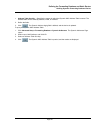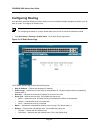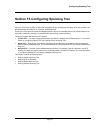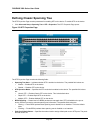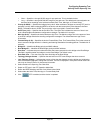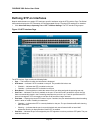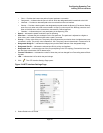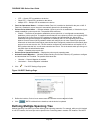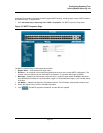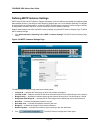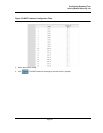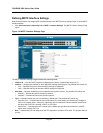
Configuring Spanning Tree
Defining STP on Interfaces
Page 195
– Root — Provides the lowest cost path to forward packets to root switch.
– Designated — Indicates that the port or LAG via which the designated switch is attached to the LAN.
– Alternate — Provides an alternate path to the root switch from the root interface.
– Backup — Provides a backup path to the designated port path toward the Spanning Tree leaves. Backup
ports occur only when two ports are connected in a loop by a point-to-point link. Backup ports also occur
when a LAN has two or more connections connected to a shared segment.
– Disabled — Indicates the port is not participating in the Spanning Tree.
• Speed — Indicates the speed at which the port is operating.
• Path Cost — Indicates the port contribution to the root path cost. The path cost is adjusted to a higher or
lower value, and is used to forward traffic when a path is re-routed.
• Priority — Priority value of the port. The priority value influences the port choice when a bridge has two ports
connected in a loop. The priority value is between 0 -240. The priority value is determined in increments of 16.
• Designated Bridge ID — Indicates the bridge priority and the MAC Address of the designated bridge.
• Designated Port ID — Indicates the selected port D-Link priority and interface.
• Designated Cost — Indicates the cost of the port participating in the STP topology. Ports with a lower cost
are less likely to be blocked if STP detects loops.
• Forward Transitions — Indicates the number of times the port has changed from Forwarding state to Block-
ing state.
• LAG — Indicates the LAG to which the port belongs.
2. Click . The STP Interface Settings Page opens:
Figure 124:STP Interface Settings Page
3. Select Enable in the STP field.



